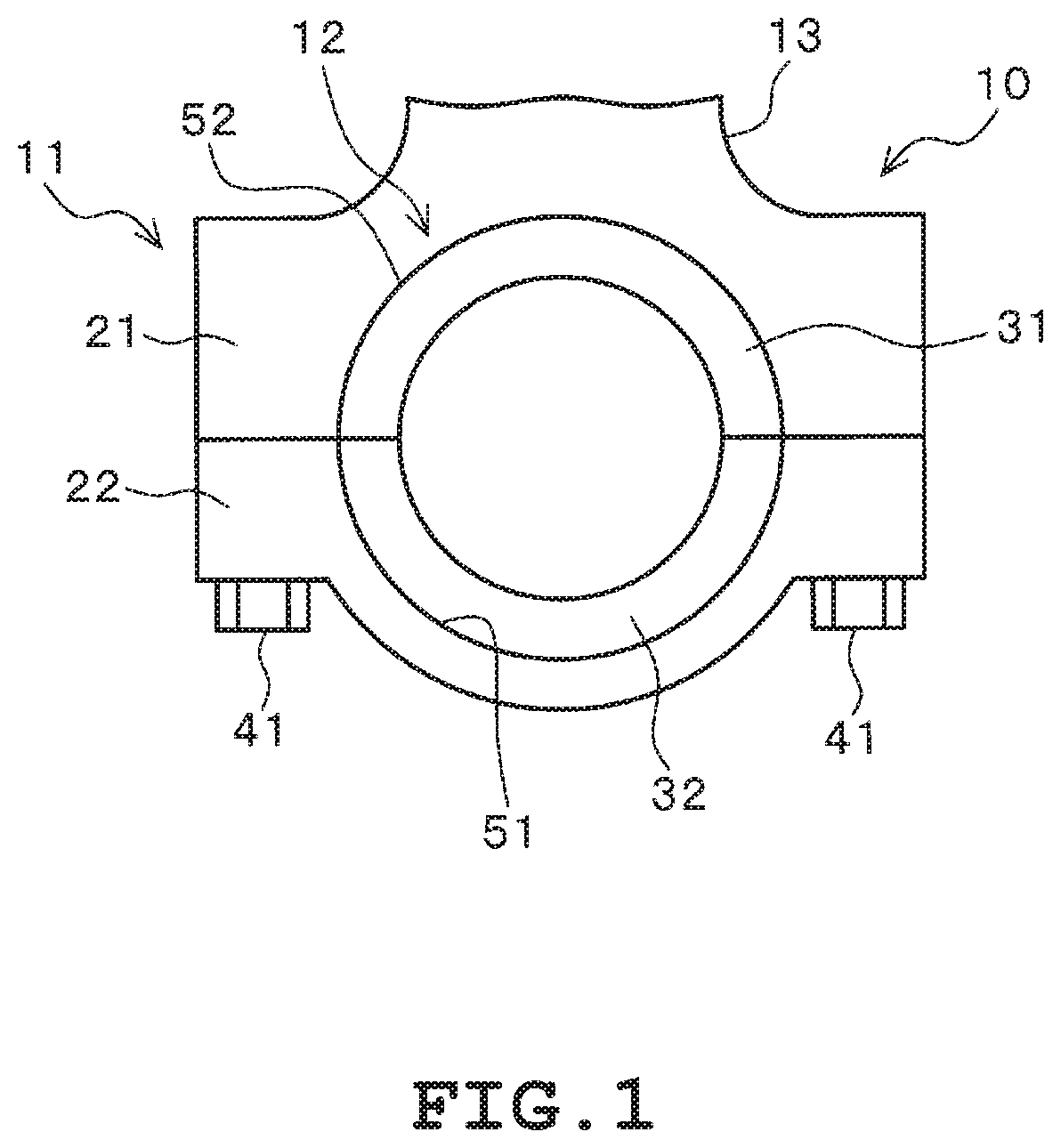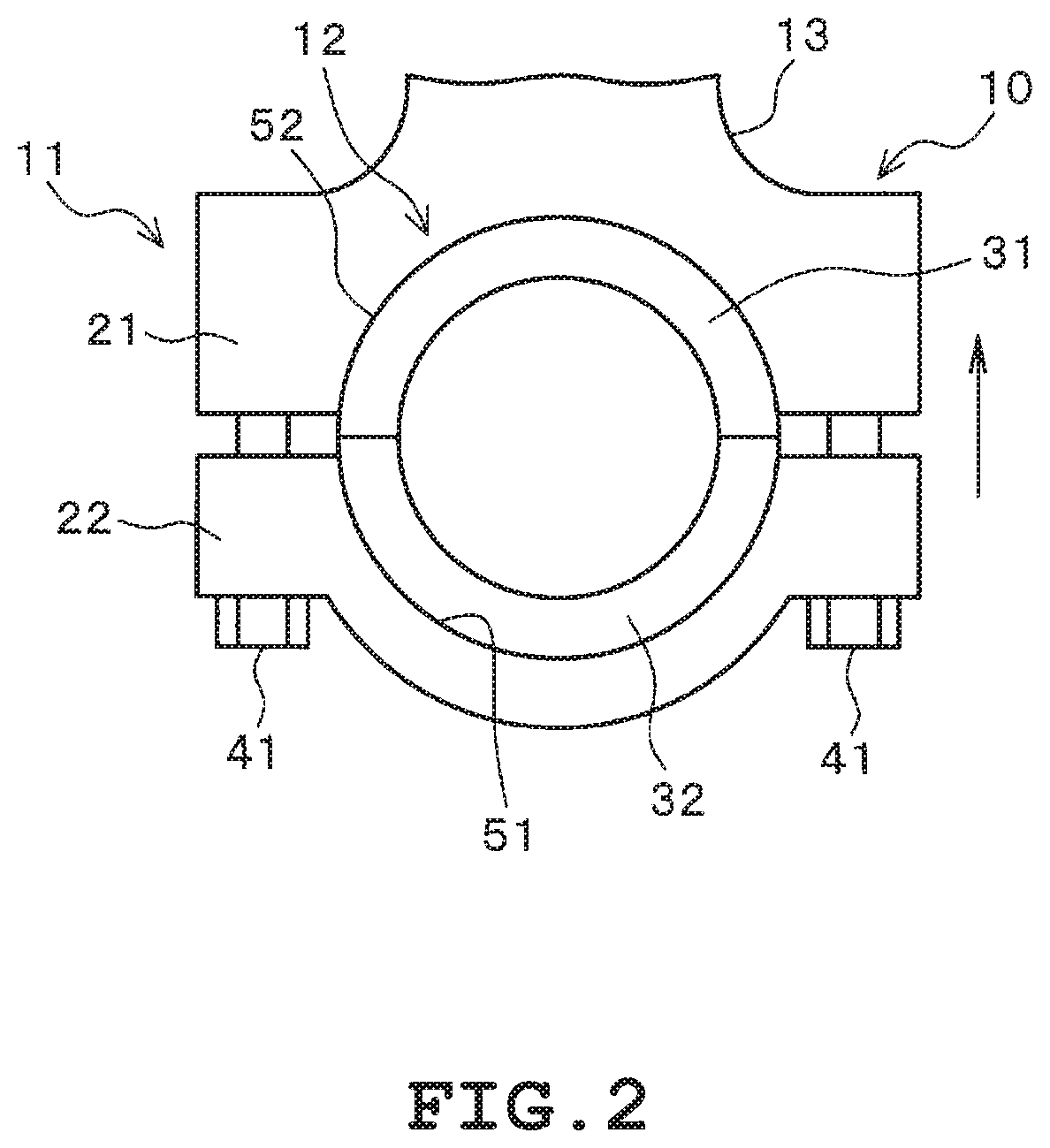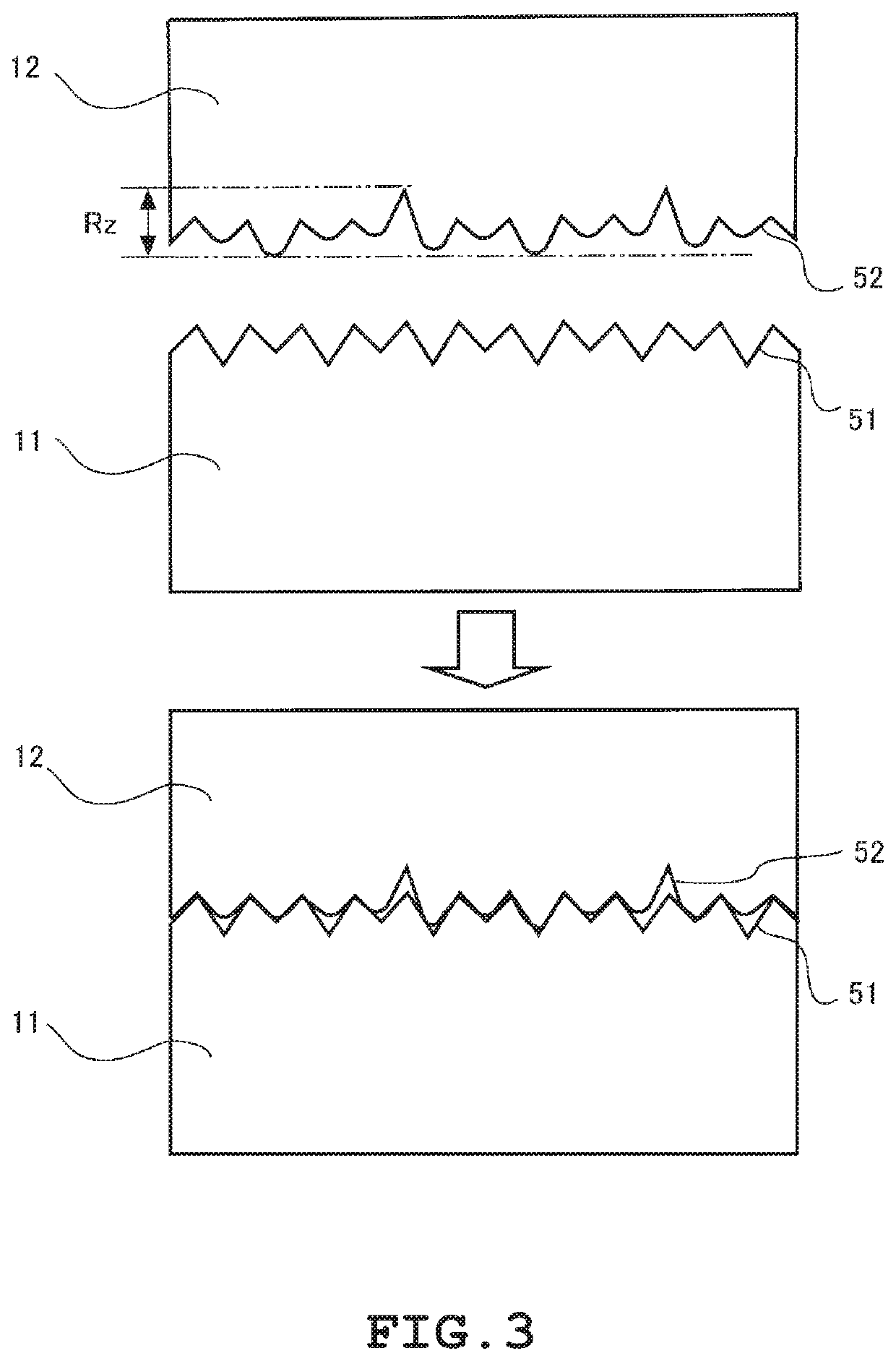Bearing member, housing, and bearing device using the same
a technology of bearing device and bearing member, which is applied in the direction of bearing unit rigid support, sliding contact bearing, mechanical apparatus, etc., can solve the problems of fretting damage, deformation, and significant deformation of the housing of the engine, and achieve the effect of reducing the damage caused by fretting and reducing the relative slip vibration
- Summary
- Abstract
- Description
- Claims
- Application Information
AI Technical Summary
Benefits of technology
Problems solved by technology
Method used
Image
Examples
example
[0033]Next, Example of the bearing member 12 described above is explained.
[0034]As shown in FIG. 6, each of samples 1 to 10 of the bearing member 12 was assembled to the housing 11 integral with the connecting rod 13 as shown in FIG. 1 to examine the bearing device 10 according to the present embodiment. The bearing member 12 was divided along the circumferential direction into two pieces, each of which was a semi-cylindrical halved bearing. In the present embodiment, the bearing member 12 with a cylindrical shape divided into two pieces has a seam that is set at a position perpendicular to the shaft of the connecting rod 13. Dimensions of the bearing member 12 were set including an outer diameter of 46 mm, a width of 16.5 mm, and a thickness of 1.5 mm. The bearing member 12 had a two-layered structure in which a bearing alloy layer made of copper alloy was stacked on a back metal layer made of carbon steel. The bearing outer peripheral surface 52 of the samples 1 to 10 of the beari...
PUM
 Login to View More
Login to View More Abstract
Description
Claims
Application Information
 Login to View More
Login to View More - R&D
- Intellectual Property
- Life Sciences
- Materials
- Tech Scout
- Unparalleled Data Quality
- Higher Quality Content
- 60% Fewer Hallucinations
Browse by: Latest US Patents, China's latest patents, Technical Efficacy Thesaurus, Application Domain, Technology Topic, Popular Technical Reports.
© 2025 PatSnap. All rights reserved.Legal|Privacy policy|Modern Slavery Act Transparency Statement|Sitemap|About US| Contact US: help@patsnap.com



